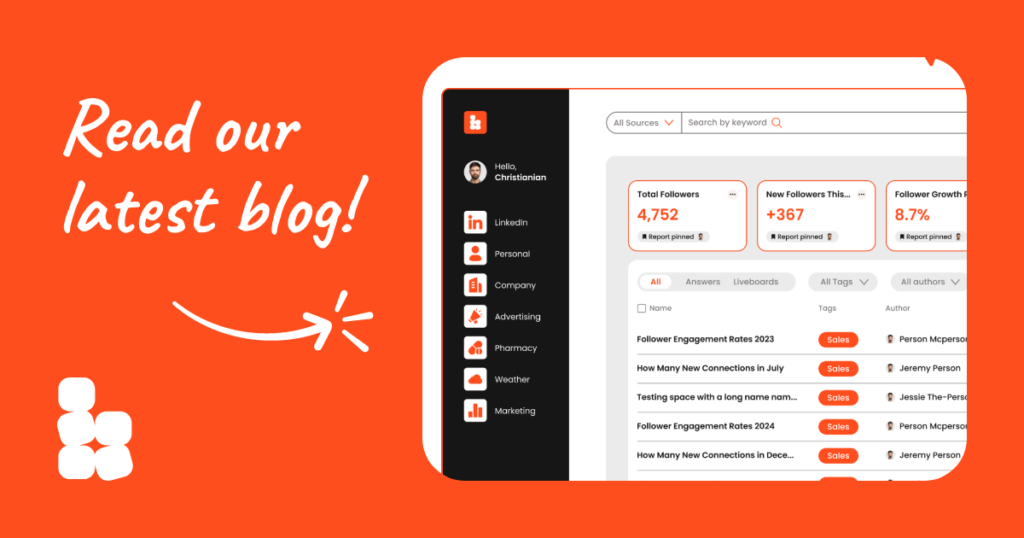Marketing data is a wealth of information that can provide valuable insights into consumer behaviour, market trends, and competitors' strategies.
However, interpreting this data can be a daunting task if you don’t know where to start. Join us as we explore different approaches to interpreting marketing data and how to gain valuable insights from it.
Gaining Insight from Market Data Analysis
When it comes to interpreting marketing data, the first step is to analyse it thoroughly. This involves examining the various data points and metrics, such as sales figures, website traffic, social media engagement, and customer feedback. By looking at the big picture and identifying patterns, trends, and correlations, you can uncover valuable insights about your target market and overall marketing efforts.
Segmenting your data is an effective way to gain insights from market data analysis. This means dividing your data into meaningful groups based on specific characteristics, such as demographics, geography, or purchasing behaviour. By doing so, you can identify different market segments and tailor your marketing strategies and messages to each one.
Segmenting your data allows you to understand your customers on a deeper level. By analysing demographic information, such as age, gender, and income, you can gain insights into the preferences and behaviours of different groups of customers.
For example, if you discover that a significant portion of your customer base is comprised of young adults with high disposable income, you can create targeted marketing campaigns that appeal to their specific interests and lifestyles.
In addition to demographic segmentation, geographic segmentation can also provide valuable insights. You can identify regional preferences and trends by analysing data based on location.
For instance, if customers in certain areas have a higher demand for a particular product or service, you can allocate your marketing resources accordingly to maximise your reach and impact in those regions.
There is another benefit to understanding which products sell better in which location. Let’s say you sell sportswear and have four warehouses split across the UK; for ease, we’ll go with North, South, East, and finally, West. If you know that people in the North are 70% more likely to buy your trainers than those in the South, you could move your stock to the warehouse in the North and save shipping costs.
Purchasing Behaviour
Purchasing behaviour is another important aspect to consider when segmenting your data. By analysing customer buying patterns, you can identify different groups of customers based on their purchasing frequency, average order value, or product preferences. This information can help you develop targeted marketing strategies, such as personalised offers or loyalty programs, to encourage repeat purchases and enhance customer satisfaction.
Furthermore, social media engagement data can provide valuable insights into customer sentiment and preferences. Metrics, such as likes, shares, and comments on your social media posts, can gauge the level of engagement and interest from your target audience. This information can help you refine your social media marketing strategies and create content that resonates with your followers.
Customer feedback is also a rich source of insights. By compiling and understanding feedback from surveys, reviews, and customer support interactions, you can identify areas for improvement and address customer pain points. This data can guide product development, customer service enhancements, and overall marketing strategy adjustments.
🔑 Key Takeaway: Interpreting Marketing Data for Business Growth
Gaining insights from market data analysis is a crucial step in understanding your target market and optimising your marketing efforts. By thoroughly analysing data points and metrics, segmenting your data based on relevant characteristics, and paying attention to customer feedback, you can uncover valuable information that can drive your marketing strategies and ultimately lead to business growth.
Analysing Trends in Market Data
Another crucial aspect of interpreting marketing data is analysing trends.
Trends can show you what’s happening in the market right now, helping you to anticipate future changes and opportunities. By looking at historical data, you can identify long-term patterns or shifts in consumer behaviour, market preferences, or industry trends. This can be particularly useful when planning your marketing strategies and making informed decisions about product development, pricing, or promotional campaigns.
When analysing trends, it’s important to consider external factors that can influence market dynamics, such as economic conditions, technological advancements, or cultural shifts. These external factors can significantly impact consumer behaviour and market preferences. For example, during an economic recession, consumers might be more price-conscious and opt for budget-friendly products, leading to a decline in sales for luxury brands. On the other hand, technological advancements like the rise of e-commerce have revolutionised the way people shop, with more consumers turning to online platforms for their purchases.
Understanding the broader context in which your market operates is crucial for interpreting trends accurately. Economic conditions, such as inflation rates or unemployment levels, can affect consumer spending power and overall market demand. Technological advancements can disrupt traditional business models and create new opportunities for innovative products or services. Additionally, cultural shifts, such as changing social values or demographic trends, can influence consumer preferences and create new market segments.
For instance, the growing awareness and concern for sustainability have led to an increased demand for eco-friendly products. Companies that can align their offerings with this trend can capitalise on the market’s shifting preferences and gain a competitive advantage. Similarly, demographic shifts, such as the ageing population or the rise of Generation Z as a significant consumer group, can shape market trends and require businesses to adapt their strategies accordingly.
Analysing trends in market data also involves identifying outliers or anomalies that deviate from the expected patterns. These outliers can provide valuable insights into emerging market trends or potential opportunities.
For example, if you notice a sudden surge in sales for a specific product category, it may indicate a growing demand or a successful marketing campaign that resonated with consumers. By closely monitoring and analysing these outliers, you can stay ahead of the competition and make proactive business decisions.
🔑 Key Takeaway: Predicting the Market
Analysing trends in market data is essential for understanding the current state of the market and predicting future changes. By examining historical data, considering external factors, and identifying outliers, businesses can gain valuable insights that inform their marketing strategies and decision-making processes. With a comprehensive understanding of market trends, businesses can adapt to the evolving landscape and seize growth opportunities.

Identifying the Relevant Data Points
It’s important to remember that not all data is created equal.
To interpret marketing data effectively, you need to identify the most relevant and meaningful data points. This requires a clear understanding of your marketing goals and objectives.
For example, if your goal is to improve customer retention, you may want to focus on metrics such as customer satisfaction scores, repeat purchase rates, or customer lifetime value. On the other hand, if your goal is to increase brand awareness, metrics like social media reach, website traffic, or brand mentions may be more relevant.
By narrowing down your focus to the most relevant data points, you can eliminate noise and unnecessary information, making your analysis more efficient and actionable.
Developing Strategies Based on Market Data
Interpreting marketing data is not just about gaining insights; it’s also about developing strategies based on those insights. Once you’ve analysed the data and identified trends and relevant data points, it’s time to translate your findings into actionable steps that can drive your marketing efforts forward.
One way to develop strategies based on market data is to conduct A/B testing. This involves testing different marketing approaches or messages and comparing the results to see which one performs better. By experimenting and iterating based on the data, you can refine your marketing strategies and optimise your campaigns for maximum impact.
Applying Market Data to Improve Targeting
One of the most powerful applications of market data is to improve targeting. By understanding your target audience’s preferences, needs, and motivations, you’re able to create more personalised and relevant marketing messages that resonate with them. This not only increases your chances of capturing their attention but also enhances the overall customer experience.
Market data can help you segment your audience effectively and identify specific customer segments that are most likely to respond positively to your marketing efforts. By tailoring your content, ad placements, or promotional offers to these segments, you can improve your targeting precision and achieve higher conversion rates.
Leveraging Market Data to Create Actionable Insights
Lastly, interpreting marketing data is all about creating actionable insights to guide your marketing decisions and drive results. It’s not enough to analyse the data and gain insights; you need to turn those insights into tangible actions that can deliver tangible value to your business.
One way to leverage market data for actionable insights is to develop data-driven personas. By combining your market research with customer data, you can create detailed profiles of your target audience, including their demographics, interests, and preferences. These personas can then serve as a basis for developing highly targeted marketing campaigns and initiatives that resonate with each persona’s specific needs and desires.
🔑 Key Takeaway: Interpreting Data
It’s a crucial skill for any marketer looking to make informed decisions and drive results. By analysing trends, identifying relevant data points, and developing strategies based on the data, you can leverage market data to improve targeting and create actionable insights.
Remember, marketing data isn’t just numbers and figures; it’s a gold mine of information waiting to be explored and utilised to its fullest potential. So dive in, experiment, and let the data guide you towards marketing success.
Automate Your Marketing Data with Bundle
Throughout this article, you’ll have likely lost count of the number of times we’ve mentioned analysing your data and being on the lookout for key trends and patterns of behaviour. Now imagine one person doing that work. How long would it take them? A week? Two? More?
The reality is that analysing data to discover actionable insights that truly move the needle is a daunting task that can easily fall victim to human error.
At Bundle, we collate every single row of data from all your tools into one platform. We then cleanse the data and analyse it, before presenting it back in a clean, decoded, and visually accessible way. We can then provide actionable insights designed to guide you to marketing decisions that drive growth. It’s really that simple.
Automation is more than just streamlining existing processes. It’s a way to remove the tedious, manual, and time-consuming elements of your role that stop you from creating new and innovative campaigns which engage your audience to make consistent commercial decisions.
Contact us today to learn how we’re able to automate your marketing data to drive game-changing results.






